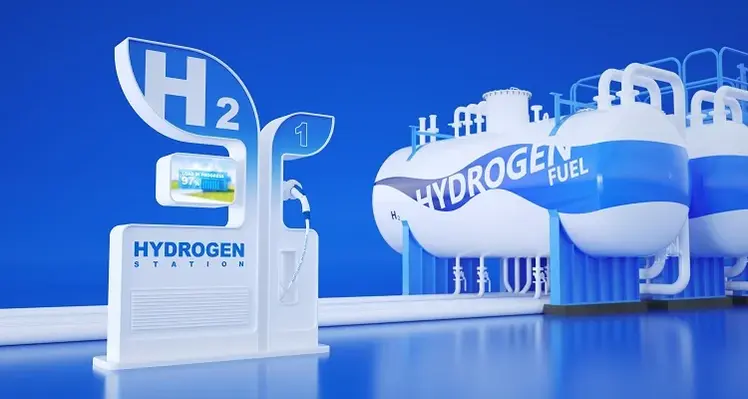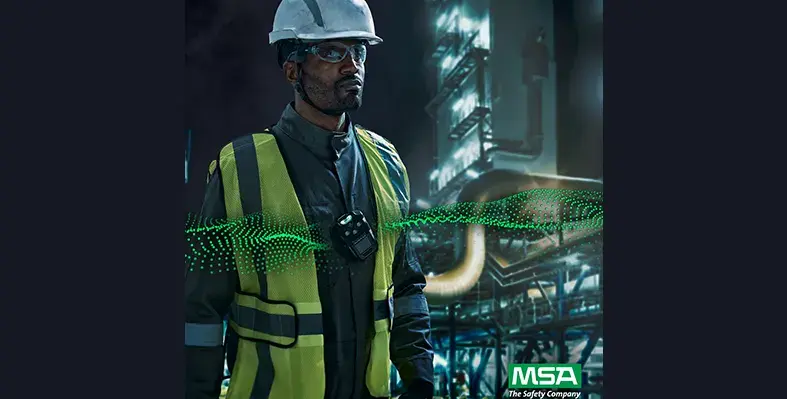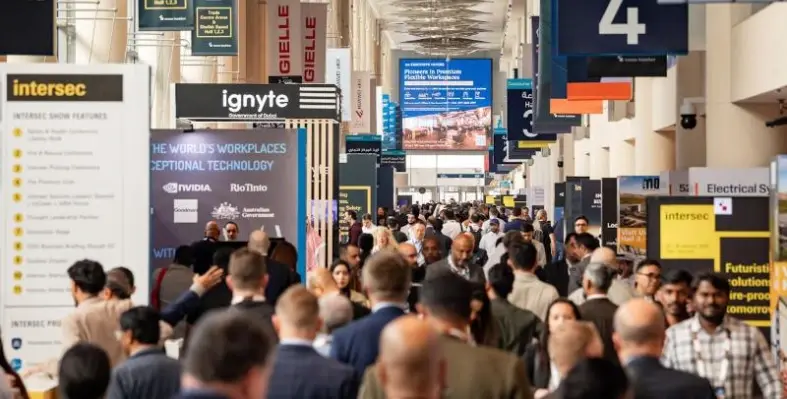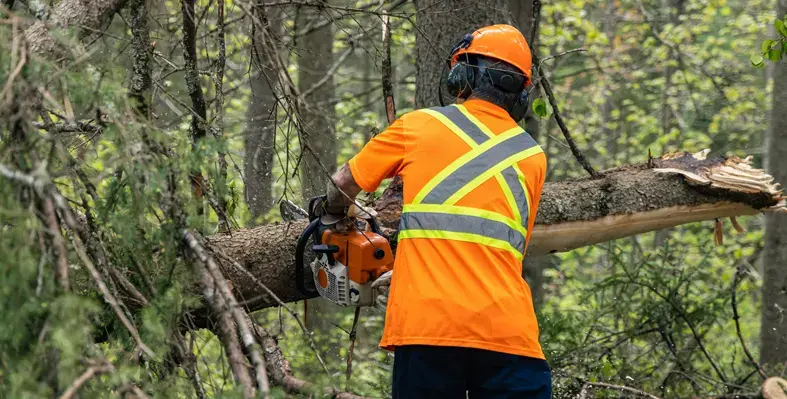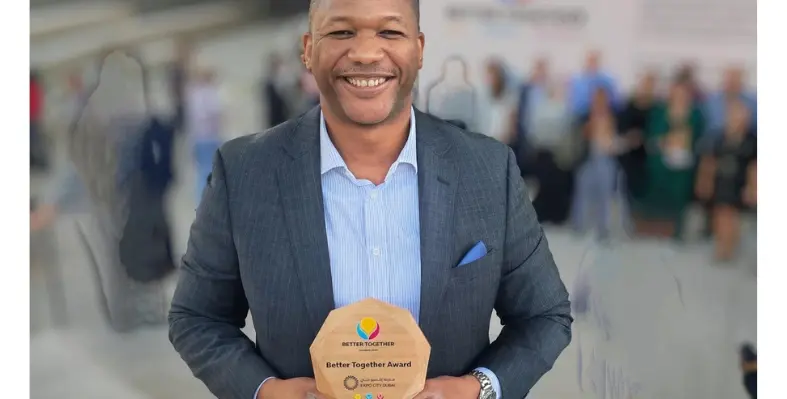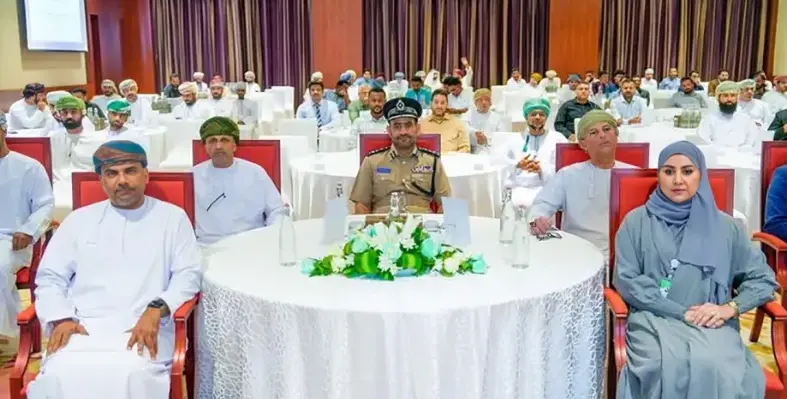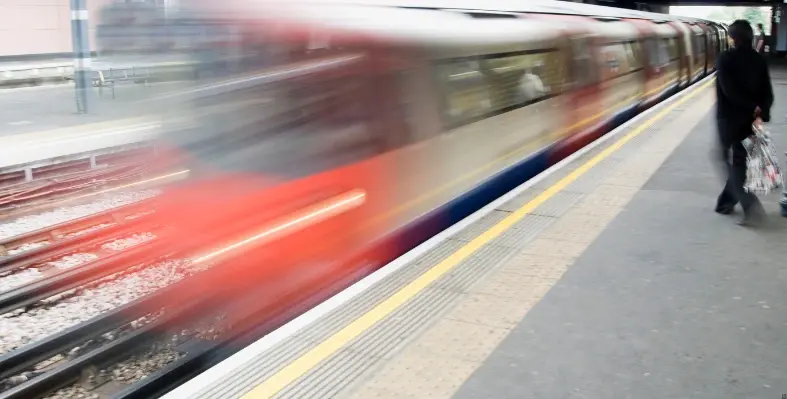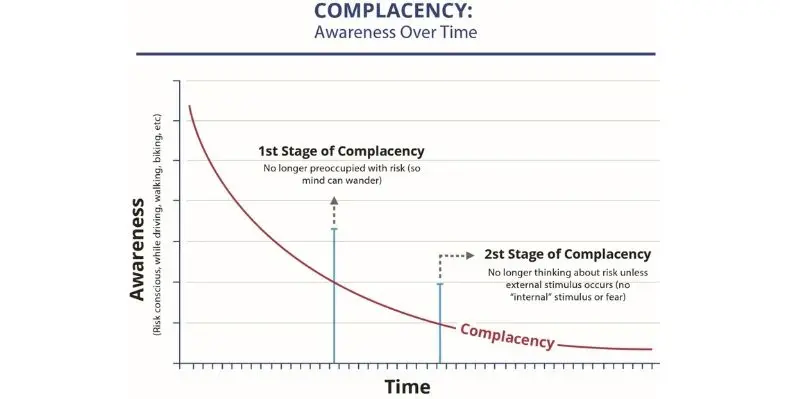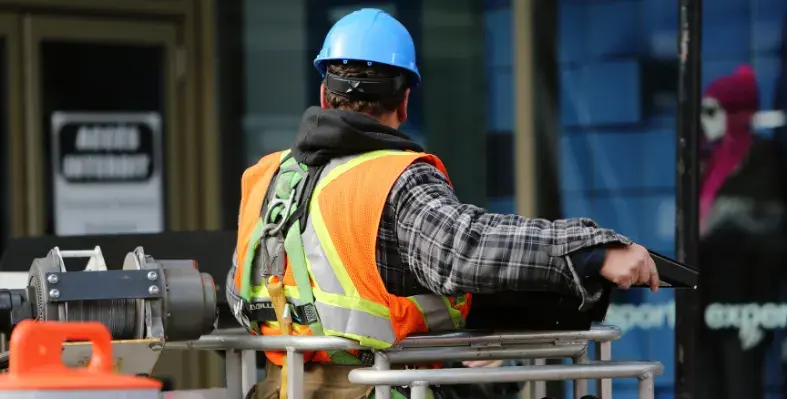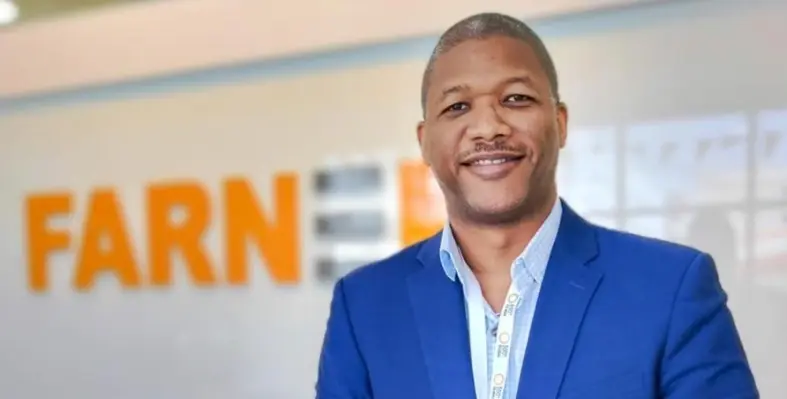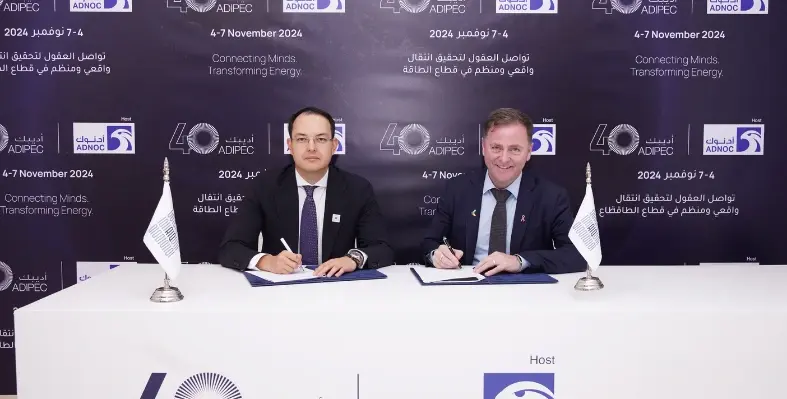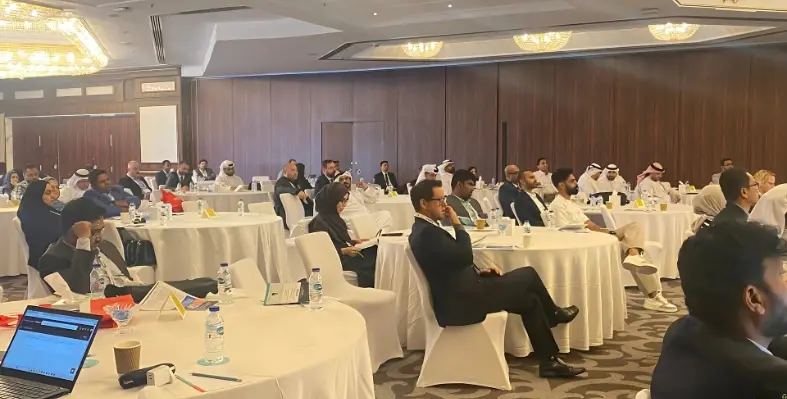HSE
HSE
- Details
- Louise Waters
- HSE
- Topic: HSE
- Date: 20 May 2025
- Year: 2025
Andrew Dennant, general manager for HIMA Middle East FZE highlights the need for advanced systems to be integrated into the hydrogen value chain to ensure the successful and secure adoption of hydrogen in line with the UAE's sustainability goals
As the global energy landscape transitions toward sustainability, hydrogen has emerged as a promising resource, particularly for nations such as the UAE, where clean energy and sustainability are central to national priorities. While hydrogen offers substantial potential as an energy source and reduces carbon emissions, its safe use requires advanced functional safety solutions, especially in large-scale industrial applications.
The role of hydrogen in a sustainable future
Hydrogen is gaining increasing attention as a viable alternative to traditional fossil fuels. Currently, most hydrogen used in industrial processes is derived from natural gas, commonly called grey hydrogen. However, green hydrogen, produced from water using renewable energy sources such as wind or solar power, is becoming increasingly significant. This process enables a substantial reduction in carbon emissions, positioning green hydrogen as a key component in the transition to a global zero-emission energy system.
In the UAE, green hydrogen is expected to play a crucial role in decarbonising various sectors, including power generation, transportation and heavy industry. While hydrogen’s adoption remains limited, its use is anticipated to grow significantly as both technology and infrastructure continue to evolve.
Safe use of hydrogen in industrial applications
Hydrogen is already widely utilised in industrial processes, such as ammonia production for fertilisers and in high-temperature manufacturing processes. Despite its advantages, hydrogen poses unique safety challenges due to its highly flammable nature. Leaks or uncontained releases of hydrogen can result in significant safety hazards. Therefore, hydrogen must be handled with the utmost care during production, storage and transportation.
Ensuring the safe use of hydrogen in industrial settings requires the deployment of advanced safety solutions. These systems must be designed to mitigate the specific application risks if hydrogen is to be used safely throughout their entire lifecycle.
Functional safety solutions for hydrogen
In large-scale operations, such as power plants or industrial facilities, advanced safety systems are essential for managing the inherent risks of hydrogen. A key example is the hydrogen production process, which involves the use of electrolysers to split water into hydrogen and oxygen. These systems require comprehensive safety functions to monitor and safeguard critical factors such as pressure and temperature. As the scale of hydrogen production increases, the complexity and sophistication of safety systems must evolve to match the rising risks associated with large-scale operations.
Transportation and storage: the key challenges
Transportation and storage of hydrogen present additional safety challenges. Due to hydrogen’s molecular properties, it is a highly permeable gas that can leak through even the smallest of cracks in pipelines, posing significant risks. To prevent leaks, advanced leak detection systems are essential. These systems monitor pipelines and storage tanks, providing early warnings and enabling swift corrective action in the event of a leak. Hydrogen storage also requires specialised safety measures. Safety protocols must ensure that storage facilities are equipped with fail-safe systems to mitigate potential risks.
Hydrogen in public transportation: safe and clean
In the UAE, hydrogen is being explored as an alternative fuel for public transportation. Hydrogen-powered buses, trains and other vehicles offer a cleaner alternative to conventional fossil fuel-powered transportation, especially in urban areas where reducing emissions is a priority. However, the integration of hydrogen into public transportation systems requires careful planning and implementation of advanced safety measures.
Safety systems must be developed to manage the use of electricity or hydrogen, depending on the infrastructure. In areas without such infrastructure, hydrogen may serve as the primary energy source. This hybrid approach ensures the safe and efficient operation of hydrogen-powered transportation.
Smart security for safe hydrogen use
As the use of digital technologies and automation in hydrogen systems increases, cybersecurity becomes an increasingly critical aspect of functional safety. The potential for cyberattacks on hydrogen production, storage and transportation systems presents a significant risk to safe and reliable operations. Therefore, it is essential to implement robust cybersecurity measures to protect these systems from malicious threats.
As the UAE continues to innovate in hydrogen technology, safeguarding these systems from cyber threats will be as crucial as the physical safety protocols in place to protect against other risks.
Looking ahead
The UAE is well-positioned to become a global leader in hydrogen production, particularly with its strong commitment to clean energy. However, to fully realise the potential of hydrogen as a key component of the UAE’s energy strategy, advanced safety solutions must be integrated across the entire hydrogen value chain. From production and storage to transportation and end use, these safety systems must evolve in tandem with technological advancements to mitigate risks and ensure the safe and efficient use of hydrogen.
By prioritising functional safety solutions, the UAE can lead by example in demonstrating how hydrogen can be safely and effectively harnessed as a clean energy source, further supporting the nation’s ambitious energy goals and contributing to global efforts toward a sustainable, zero-emission future.
- Details
- Louise Waters
- HSE
- Topic: HSE
- Region: Middle East
- Date: 13 May 2025
- Year: 2025
Hydrogen sulfide (H2S) is a highly toxic gas found in various industrial settings, and understanding the difference between low and high concentrations is crucial, says MSA Safety
Hydrogen sulfide (H2S) is a colorless, highly toxic gas with a characteristic rotten egg smell at low concentrations. It is commonly found in industries such as oil and gas, wastewater treatment, and mining. Exposure to H2S poses serious health risks, ranging from mild irritation to fatal poisoning, depending on concentration levels. To ensure worker safety, it is essential to understand the differences between low and high concentrations and implement effective detection and protection strategies.
Low vs. high concentrations of H2S
At low concentrations (0.01–10 ppm), H2S emits a strong odor, which can serve as an initial warning. However, prolonged exposure, even at these levels, can cause eye irritation, headaches, and dizziness. Between 10–50 ppm, symptoms become more pronounced, including nausea and respiratory discomfort.
At higher concentrations, the risks increase dramatically:
- 50–100 ppm: Severe eye and respiratory irritation, with potential lung damage.
- 100–500 ppm: Loss of smell (olfactory fatigue), making the gas even more dangerous.
- 500–1000 ppm: Immediate collapse, unconsciousness, and life-threatening respiratory failure.
- 1000+ ppm: Rapid death within minutes due to respiratory paralysis.
Given these dangers, relying on the human sense of smell is ineffective. Instead, advanced gas detection technologies are critical for early warning and safety.
Enhancing safety with connected gas detection
MSA Safety’s ALTAIR io4 gas detector, part of the Connected Work Platform, provides real-time monitoring and instant alerts when H2S levels reach dangerous thresholds. Designed for harsh environments, the ALTAIR io4 enhances worker protection with features like:
- Automated Compliance: Ensuring devices remain properly calibrated and tested.
- Real-Time Alerts: Immediate notifications for exposure risks.
- Cloud-Based Data Management: Providing insights to improve workplace safety protocols.
Enter your details to watch the video to see how the ALTAIR io4 can protect your team.
Additional protection with MSA+ Services
Beyond detection, maintaining reliable equipment is key to ensuring continuous safety. MSA+ offers two essential services to optimize device performance:
- MSA+ Device Protection: Coverage for accidental damage and extended maintenance.
- MSA+ Autofill: Automated replacement of calibration gas and sensors to keep devices ready for use.
These services reduce downtime and operational costs while ensuring workers remain protected at all times.
Learn more about MSA+ Device Protection and MSA+ Autofill to keep your gas detection equipment in top condition.
Conclusion
Understanding the risks associated with H2S exposure and implementing reliable gas detection solutions are essential for workplace safety. The ALTAIR io4, combined with MSA+ services, provides a comprehensive approach to hazard detection and equipment maintenance. Prioritise safety by equipping your team with the right tools.
Enter your details to watch the video to see MSA Safety’s solutions in action.
- Details
- Sania Aziz
- HSE
- Topic: HSE
- Date: 5 February, 2025
- Year: 2025
A record number of exhibitors representing 61 countries have participated in the 26th edition of Intersec, the largest business event in the world that maps the future of security, safety, and fire protection.
The largest edition of the event took up 61,000 sq m of space at the Dubai World Trade Centre (DWTC), a 20% increase from the previous year.
Under the auspices of His Highness Sheikh Mansoor Bin Mohammed bin Rashid Al Maktoum, the event, which ended last month, drew 47,300 visitors from 142 countries and featured state-of-the-art technologies and vital solutions in five major areas: Homeland Security & Policing, Cyber Security, Safety & Health, Fire & Rescue, and Commercial & Perimeter Security. The show's theme was "Mapping the Future of Security, Safety, and Fire Protection."
Among the new features this year was the successful opening of the two-day Intersec Policing Conference, which brought together more than fifty knowledgeable speakers. Discussions covered a wide range of subjects, including the future of road safety, proactive and productive policing, strategic automation in policing, drone operations, and quantum-led crime. Senior law enforcement officials from the Abu Dhabi Police, INTERPOL, the Metropolitan Police, and the UAE Financial Intelligence Unit were among them.
The top Chief Information Security Officers (CISO) in the area were also invited to the CISO Business Briefing, which was successfully launched while examining the main information security trends, threats, and opportunities. The opening keynote speaker was H.E. Dr. Mohamed Al Kuwaiti, Head of Cybersecurity, UAE Government.
The annual awards
The exhibition's ground-breaking collaboration with Ignyte, which resulted in the opening of the Intersec Startup Arena, was another first. It gave startups a chance to present their innovative ideas and solutions to a group of government officials, business executives, and elite investors, opening doors for them to secure investment, mentorship, and strategic alliances.
ASIS International, Firestop Contractors International Association (FCIA), Gallagher, Sharjah Civil Defence, NAFFCO, Abu Dhabi Civil Defence, Nordon, Saudi Sicli, and UXE Security Solutions were among the companies that signed Memorandums of Understanding (MoUs) during the three-day event held by Intersec 2025.
Several industry leaders were honoured at the 4th annual Intersec Awards, which honour people, groups, and organisations for establishing new benchmarks for excellence in vital sectors.
Winners on the evening included Dubai Civil Defense, NAFFCO, Dubai Municipality, Ministry of Interior, Emirates Safety Laboratory LLC, and the Telecommunications and Digital Government Regulatory Authority (TDRA).
Wajahat Hussain, show manager, Messe Frankfurt Middle East, said, “The team and I are thrilled to have welcomed an unprecedented gathering of industry professionals from around the world. Intersec has once again proven to be the premier platform where global leaders, innovators, and experts converge to exchange knowledge, forge partnerships, and explore cutting-edge advancements that are shaping the future of safety, security, and fire protection.
“Surpassing previous exhibitor records is a testament to Intersec’s growing influence and its pivotal role in driving forward-thinking solutions for a safer, more secure world. This milestone underscores our commitment to fostering collaboration, showcasing pioneering technologies, and setting new benchmarks for excellence in this critically important industry.”
Intersec 2026 will take place from 12 – 14 January 2026 at the Dubai World Trade Centre.
- Details
- Madhuri Ramesh
- HSE
- Topic: HSE
- Date: 29 January, 2025
- Year: 2025
With Storm Éowyn passing through the country, the Health and Safety Authority (HSA) has been urging the immediate clean-up operation be left with the emergency services and professional operators who have the necessary competence to undertake the work safely
Chainsaw risks
The HSA strongly prefers only trained and competent operators equipped with the necessary personal protective equipment (PPE) to handle chainsaws, the primary equipment required to remove fallen trees and branches. Some of the key recommendations for using chainsaws include:
- Only experienced personnel who have the necessary training should be allowed to handle a chainsaw.
- Conducting a risk assessment is necessary prior to starting any chainsaw work.
- Wearing the necessary protective gear such as helmets, eye protection, specialist chainsaw gloves and leg protection, and steel-toe boots are mandatory while taking part in clean-up operations.
- Chainsaws need to be appropriately maintained and include functioning chain brakes and sharp blades.
- Operations must be carried out in groups rather than individually.
Kickback is one of the more common causes of serious chainsaw injury. The kickback zone is at the top tip of the chainsaw bar and may occur when the moving chain at the nose or tip of the bar touches an object such as a branch or a log. If this happens, it can cause a rapid upward motion of the bar back towards the operator who may suffer a very serious or fatal injury.
Recommendations for safe use
For the safe use of chainsaw, appropriate training is necessary. Chainsaw courses with various levels of training are available. For example, a basic chainsaw course covering the felling of small trees will be five days in duration. Shorter courses (two days) which only cover chainsaw maintenance and cross cutting of felled timber are also available. However, these do not effectively demonstrate the techniques required for felling trees safely. Therfore, prior to undertaking any trainings, particular training requirements need to be discussed with an accredited chainsaw training provider.
Persons undergoing chainsaw training must be adequately supervised. They should also be closely supervised post training until such time as they are experienced and fully competent. They should always complete a pre-task risk assessment. Similarly, farmers who wish to use a chainsaw for such tasks as clearing fallen branches and pruning trees to maintain clearance for machines on their land should complete full certified chainsaw training. Before attempting even small tasks, farmers must complete a risk assessment to ensure appropriate control measures are put in place.
In case of fallen or storm-damaged trees, the HSA advises personnel to follow certain a code of conduct. These include:
- Approaching fallen trees with caution, particularly those that are entangled with power lines.
- In case of doubt, assume all cables are lve and report to ESB Networks.
If required to work from roofs or elevated structures, HSA urges workers to adhere to the following guidelines:
- Working during extreme weather conditions should be strictly avoided for safety reasons.
- Using proper fall protection equipment, including harnesses and lanyards.
- Ensuring ladders and equipment are secure and placed on stable surfaces.
- Avoiding overreaching or overloading ladders, and having a spotter present whenever possible.
- Engaging qualified professionals for tasks involving complex or hazardous heights.
“If you don’t have the proper training or equipment to safely use a chainsaw, don’t take the risk and instead engage with emergency and professional services," said chief Inspector with the HSA, Mark Cullen. "Farmers in particular may be tempted to deal with fallen trees on their land or on adjoining roads. Personal safety must be the main priority and I strongly urge only those with the necessary skills to undertake work with chainsaws”.
- Details
- Sania Aziz
- HSE
- Topic: HSE
- Date: 17 December, 2024
- Year: 2024
Farnek, a prominent smart and green facilities management (FM) company based in the UAE, was recently awarded at the "Better Together Awards," where it was given the headline prize for its outstanding health and safety initiatives.
The Expo City Dubai-organised awards honour exceptional individual and group accomplishments in worker welfare (WW) and health and safety (H&S), honouring its employees and contractors who help create a safer and healthier work environment at Expo City Dubai.
Farnek received the flagship honour, the "Better Together Award," which is granted to an organisation that has the finest initiative to promote cooperation and engagement with Expo City Dubai in 2024, demonstrating real-world implementation and measurable outcomes.
“This award recognises Farnek’s longstanding commitment, dedication and consistency, advancing the company’s H&S and WW strategy, which aligns closely with Expo City Dubai’s core values of care, integrity and excellence,” said Ryan Mitchell, Farnek’s head of quality, health, safety, excellence and wellbeing (QHSEW).
In order to increase the calibre and effectiveness of HSE reporting, Mitchell oversaw the Expo City HSE teams and used SAFETEK, a digital safety management technology. In order to create a safer atmosphere for renters and guests, he was able to reduce safety incidents by 21% and increase reporting observations by 38%.
At the awards ceremony, Farnek's Worker Welfare Officer, Mary Grace Besabella, was also acknowledged. She was given the Worker Welfare Impact Award for raising employment, housing, and transportation standards at Expo City Dubai in order to improve worker welfare.
Besabella supported a safe, friendly, and healthy workplace by attending to the needs and expectations of every employee. In order to initiate the reform of the operational structure, she also organised events and promoted health programmes.
- Details
- Sania Aziz
- HSE
- Topic: HSE
- Date: 12 December, 2024
- Year: 2024
The Oman Oil Marketing Company (OOMCO) launched its annual Health, Safety, Environment, and Quality (HSEQ) Week from 8-12 December.
Through important initiatives, awareness workshops, and strategic partnerships, OOMCO engaged employees, stakeholders, and the broader community in a five-day event that showcased the company's commitment to fostering a culture of health and safety.
Brigadier General Engineer Ali bin Saif Al Maqbali, Chief of the Civil Defence and Ambulance Authority (CDAA), presided over a distinguished Kick-Off Ceremony to start the week.
Notable stakeholders, including representatives from the Ministry of Labour, Oman Energy Association (OPAL), and Civil Defence, attended the HSEQ Contractor Forum. This event promoted cooperation in health and safety management, promoted the exchange of ideas, and highlighted best practices.
OOMCO's leadership team travelled to key partners during HSEQ Week in order to coordinate health and safety goals, gather critical input, and strengthen collaborations.
Employees at OOMCO took part in a variety of events aimed at raising awareness and promoting healthy lifestyle choices. These included medical examinations, blood drives, educational campaigns on important subjects including diabetes prevention and breast cancer, and a daily safety quiz. The session "No to Amputation for Diabetic Foot Patients," which focused on the value of early intervention and preventative care for diabetic patients, was one of the most noteworthy efforts.
To increase the influence of its health and safety initiatives outside of the workplace, OOMCO partnered with institutions like the Cancer Association, Oman International Hospital, and the Blood Bank.
Tarik Mohammed Al Junaidi, CEO of OOMCO, said, “Our Annual Health and Safety Week exemplifies our unwavering dedication to safeguarding the health and welfare of our employees, partners, and the community. We strive to exemplify health and safety as essential elements of our operations through such programmes, while cultivating a culture that emphasizes the well-being of all those we serve.”
- Details
- Sania Aziz
- HSE
- Topic: HSE
- Date: 9 December, 2024
- Year: 2024
Parsons Corporation has announced the official launch of the Riyadh Metro, marking a significant milestone in the transformation of the Saudi capital's urban transport network.
The inauguration, held on 27 November 2024, celebrates the culmination of years of collaborative effort under the Royal Commission for Riyadh City (RCRC).
By August 2024, the Riyadh Metro Transit Consultants (RMTC) achieved over 7 million work hours without a lost-time injury, reflecting the rigorous health, safety, and environmental (HSE) standards maintained throughout the project. This milestone was supported by more than 450,000 HSE inductions and over 13,000 targeted HSE campaigns, underscoring the project's strong commitment to workplace safety and operational excellence.
Parsons played a pivotal role as the lead partner in the Riyadh Metro Transit Consultants (RMTC), a joint venture with Egis and SYSTRA. The consortium was tasked with project and construction management for two major contracts within the metro's development. With the successful delivery of these projects, Parsons has reaffirmed its reputation as a leader in managing complex infrastructure initiatives.
“From its inception, the Riyadh Metro was conceived as a transformative project to reshape urban mobility and dramatically improve the lives of residents and visitors alike. On behalf of Parsons, a long-term partner of the RCRC, and the lead consultant for the delivery of this world-class system, I would like to congratulate His Majesty King Salman and His Royal Highness Crown Prince Mohamed Bin Salman on its first day of operations,” said Pierre Santoni, president, infrastructure EMEA at Parsons. “We look forward to supporting the city of Riyadh and the Kingdom in the successful completion of subsequent stages of the metro and the wider Saudi Vision 2030, by using global experience and deep local expertise to deliver excellence on every project.”
- Details
- Sania Aziz
- HSE
- Topic: HSE
- Date: 6 December, 2024
- Year: 2024
Larry Wilson, Author and CEO, SafeStart, emphasises the critical importance of identifying "when" we're most vulnerable to complacency and critical errors. Read on:
As we keep exploring the series Paradigm Shifts in Safety, we’re excited for you to check out the eighth article in this 12-part series.
Lots of ground covered so far: hazardous energy and movement, three sources of unexpected events (over 95% in the Self-Area), the counter-intuitive nature of dangerous activities vs. actual outcomes and then why: because when both our eyes and mind are not on task, for that moment, we are defenseless.
So as mentioned in an earlier article, it’s not that we are totally defenseless, it’s that from time to time, we are “momentarily defenseless”. which is why you hear so many people talking about car wrecks or serious injuries, saying that I really wasn’t doing anything wrong, I wasn’t really speeding or rushing. Okay, I was a bit tired and I was thinking about a problem at work, or home, or whatever… and then (car wreck, bad fall, serious cut, blown knee, concussion, etc.).
So, figuring out “when”, becomes the crux of the matter. Unless we know when those moments will happen, knowing why we get hurt badly (eyes and mind not on task/no reflex) won’t help to prevent the next one. So, figuring out the “when” part is the key. And unfortunately, for so many years, the focus has been on “what” the people were doing and how much hazardous energy they were dealing with (which is important) but not, which is the main paradigm shift here, not nearly as important as figuring out when.
When will you or me or the next guy in line— when will we be most likely to make both critical errors at the same time—where there is also a significant amount of hazardous energy involved?
Well… it will likely be doing something that you have been doing for a while, because at the beginning of any activity where there is a fair bit of hazardous energy and the potential for injury – “awareness“ or “eyes and mind on task” – is very high (see Figure #1).
During this first period with an activity or skill it is possible and normally quite natural to self-trigger or to be able to self-trigger on the amount of hazardous energy. And as a result, it’s easy to stay focused. It may even seem, at least when you first start out, that it would be impossible to become complacent.
However, as we all know, the initial fear rarely lasts forever. And over a period of time, depending on the activity or skill required, we come to the first stage of complacency. This is where the fear or skill is no longer pre-occupying.
And as mentioned in previous articles, we don’t give our minds permission to wander. It happens without our permission or without making a decision to think about something else (Figure #1). So even if you don’t have anything else you need to think about or want to think about, your mind can still drift away.
But if you’re rushing, chances are it’s for a reason. It might be because you want to get there early. More likely, it’s because you don’t want to be late. Either way, that’s what most people think about when they’re rushing—not what is the risk in the moment – right now (driving really fast on a city street). And if the consequences for being late are going to be really bad (late for meeting at work)…
Click here for the full article and to learn why understanding when moments of vulnerability occur is key to prevention, not just focusing on what we’re doing. Discover how to shift your perspective and enhance your safety strategies: https://ae.safestart.com/paradigm-shifts/8-the-complacency-continuum-and-when-vs-what/
- Details
- Sania Aziz
- HSE
- Topic: HSE
- Date: 5 December, 2024
- Year: 2024
The Global Manufacturing and Industrialisation Summit (GMIS2024) will convene on 5 December during Abu Dhabi Business Week, uniting global leaders from government, industry, and international organisations to advance industrial safety standards and innovations.
The summit will explore critical safety challenges posed by interconnected systems and AI-driven technologies while promoting opportunities to standardise practices across borders. Discussions will emphasise sustainable growth, worker safety, and operational resilience.
Collaborating with Abu Dhabi Civil Defence and the Global Initiative for Industrial Safety (GIFIS), GMIS2024 will follow the "Manifesto for Global Industrial Safety" to propose actionable strategies for enhancing safety and resilience across industries.
The summit will feature insights from high-ranking officials, including H.E. Osama Amir Mohamed Fadhel from the Ministry of Industry and Advanced Technology (MoIAT), H.E. Brigadier General Salem Abdullah Bin Barak AlDhaheri of Abu Dhabi Civil Defence, and H.E. Dr. Mohamed Al Kuwaiti, the UAE’s cybersecurity chief.
Representatives from key Abu Dhabi entities, including ADIO and Abu Dhabi's Department of Economic Development, will also participate, reinforcing the emirate’s role as a leader in industrial innovation and safety.
Discussing safety
Key sessions at GMIS2024 will spotlight critical advancements in industrial ecosystems and safety. “Make It In The Emirates: A Future Ready Ecosystem” will showcase the UAE as a global model for industrial innovation, while “Emergency Response 2.0: Reshaping the Future of Crisis Management & Fire Safety” will delve into cutting-edge technologies revolutionising crisis response.
The event will also introduce “The Manifesto for Global Safety: A Call to Action for Resilient and Safe Industries”, advocating for worker safety and seamless technological integration. Industry leaders such as the Institute for Manufacturing at the University of Cambridge and Axial Global Advisors will enrich discussions, reflecting the diversity of expertise across the industrial ecosystem.
H.E. Osama Amir Mohamed Fadhel, said, "Industrial safety is a cornerstone for sustainable growth and resilience in an era of rapid technological evolution. The Global Manufacturing and Industrialisation Summit serves as a vital platform to unify efforts, share best practices, and implement innovative industrial safety frameworks that protect workers, enhance operational efficiency & productivity, and foster global collaboration."
- Details
- Sania Aziz
- HSE
- Topic: HSE
- Date: 25 November, 2024
- Year: 2024
Ryan Mitchell, Farnek's head of Quality, Health, Safety, Excellence, and Wellbeing (QHSEW), spoke on day two of the annual HSE MENA Forum, held at Le Meridien Hotel & Conference Centre, Dubai, on 13 November.
Farnek, a leading UAE-based smart and green facilities management company, shared insights on leveraging technology to enhance safety and operational efficiency.
The forum, which focuses on advancing health, safety, and environmental practices in critical industries like oil and gas, construction, and infrastructure, featured five sessions addressing compliance, risk management, corporate culture, and sustainability.
Mitchell’s session, ‘Fast-tracking Technology Through Revolutionising Safety and Efficiency’, highlighted the role of artificial intelligence and predictive tools in improving workplace safety and productivity. He discussed how embracing digital solutions could transform key HSE processes, driving compliance and risk reduction across industries.
The event provided a platform for industry leaders to explore emerging technologies and strategies, aligning HSE practices with sustainability and efficiency goals in an evolving industrial landscape.
“Incorporating digital HSE solutions offers a route to a safer workplace, augmented compliance, fewer incidents, and heightened operational efficiency. However, prudent planning and implementation, grounded in a profound understanding of organisational requirements and challenges, are vital prerequisites for success,” said Mitchell.
One such solution SAFETEK, which has been developed in-house by Farnek group company HITEK, is a digital safety management tool with the power of automation, which supports organisations that are trying to move from reactive to a more predictive approach.
“Our cloud and mobility-based solution has been built specifically to digitalise reporting, to work towards a safer workplace. SAFETEK improves reporting times and data analysis to provide insights for preventative action,” said Mitchell.
“This reduces downtime and ensures business continuity, which can lead to cost savings for organisations through reduced incidents, better resource allocation, improved efficiency and ultimately, a safer working environment,” added Mitchell.
- Details
- Sania Aziz
- HSE
- Topic: HSE
- Date: 20 November, 2024
- Year: 2024
Abu Dhabi-based AIQ, a pioneer in artificial intelligence solutions for the energy industry, has entered into a strategic partnership with Kent, a global leader in engineering and digital services.
The collaboration, unveiled at ADIPEC 2024, aims to push the boundaries of engineering optimisation and digital transformation in the energy sector.
This partnership combines AIQ’s AI technology with Kent’s expertise in digital engineering and project execution to deliver innovative, efficient, and sustainable solutions.
Key areas of focus include the development of an AI-powered platform to optimise Front-End Engineering and Design (FEED), enhancing the productivity and capabilities of engineering teams.
The agreement also prioritises the exploration of autonomous operations, digital twin technologies for advanced asset management, and applications aimed at improving health, safety, and environmental standards.
Magzhan Kenesbai, acting managing director of AIQ, commented, “AIQ is at a pivotal stage in its development as we seek to expand our capabilities and geographies of operation. Collaborating with an established engineering and solutions provider like Kent will allow us to accelerate the scale and delivery of our transformational AI solutions as we progress autonomous and intelligent systems across the entire energy value chain.”
Tush Doshi, chief operating officer at Kent, said, “Working with AIQ allows us to combine our engineering and project management expertise with cutting-edge AI technology to address some of the most pressing challenges in the energy sector. We are committed to delivering solutions that not only meet today’s demands but also pave the way for a more resilient, sustainable, and digitally driven future. Together, we can create innovative solutions that make a real impact for our clients and the industry.”
- Details
- Sania Aziz
- HSE
- Topic: HSE
- Date: 15 November, 2024
- Year: 2024
The HSE MENA 2024 conference, held on 12-13 November, convened health, safety, and environment professionals in Dubai for a forward-thinking exploration of sustainability, organisational safety, and technological advancements in HSE.
FOR IMMEDIATE RELEASE
Dubai, UAE: The two-day event, held at Le Méridien Dubai Hotel & Conference Centre, brought together industry leaders, experts, and innovators to share insights and strategies aimed at enhancing workplace safety, resilience, and sustainability across the Middle East.
The conference opened with a presentation on leadership in sustainability by Dr. Rashed Mohammed Karkain, sustainable development expert at the Sustainable Development Research and Training Institute, who highlighted the necessity of environmental sustainability and global equity in driving organisational and societal progress.
Sessions on the first day focused on proactive safety governance, with insights from Thomas Meier, Executive Consultant at Krause Bell Group, who highlighted how organisations can develop stronger Serious Injury and Fatality (SIF) prevention strategies. Delegates were introduced to cutting-edge strategies for incident prevention through AI and data insights by Hussain Suliman Rasul, senior solutions consultant at Enablon, showcasing how digital tools empower proactive safety practices.
Using AI for hazard identification
Day two expanded on themes of resilience and innovation, featuring sessions on emergency preparedness and leveraging AI in health surveillance.
A standout panel explored the integration of advanced technologies into personal protective equipment and predictive analytics for transforming incident management and operational optimisation. Lt Cdr Mahendra Hakde, founder and managing director of CUDE Analyser, and Ryan Mitchell, head of QHSEW at Farnek Services, provided insights into applying smart infrastructure and digital tools for proactive hazard identification and cost efficiency.
Key discussions also examined managing psychosocial hazards, with Sultan Karrani, senior engineer at ADNOC, addressing the mitigation of fatigue and stress to enhance workforce well-being and productivity.
Closing sessions delved into fostering a strong safety culture and driving social sustainability through comprehensive assessments and governance frameworks, led by Maged Elkassaby, IOSH chartered member and business assurance representative.
Networking breaks and interactive panel discussions enabled delegates to connect with peers, share best practices, and explore the latest HSE technologies in the exhibit hall.
HSE MENA 2024 stood out for its focus on innovation and collaboration, offering a platform to shape the future of HSE management in the region. Participants left equipped with knowledge and tools to drive safety and sustainability across their organisations.
-ENDS-
